Do you think that your dishwasher uses a lot of water? How many gallons do you believe it uses per load?
Is it more or less than what would be used if you hand-washed the dishes instead of using the machine?
How Much Water Does A Dishwasher Use Per Load?
A typical modern dishwasher uses between 3-6 gallons of water per load. The amount of water that your dishwasher uses per load will depend upon the machine and the way in which you use it.
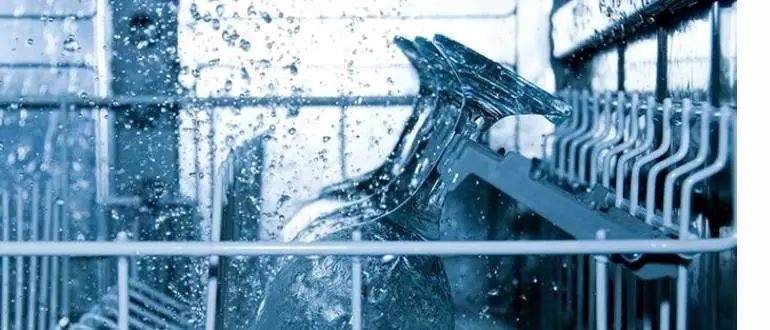
How Much Water Does A Commercial Dishwasher Use Per Load?
The estimated water use for a commercial dishwasher, per cycle is approximately 14 gallons of potable water. A commercial dishwasher will vary in gallons per wash by the type of model chosen and size of restaurant operation.
However, most modern models are Energy Star rated with an average of 15-17 gallons per cycle.
How Much Water Does A Dishwasher Use Per Minute?
The average dishwasher will use between 2-4 gallons of water per minute. Though a lot of factors come into play when determining how much water a dishwasher uses per minute.
Most modern-day models only use as much as 8-12 gallons of water per full cleaning cycle.
How Much Hot Water Does A Dishwasher Use?
ANSI Standards say that dishwashers use 4 – 6 gallons of hot water per regular cycle. While some older dishwasher models use 9 to 20 gallons.
Newer standards are more strict on water usage. New standards are reflective of current dishwasher models in terms of water usage.
How Much Water Does A Dishwasher Use In Liters?
The average dishwasher in the USA consumes about 15 liters of water per cycle when doing a normal wash.
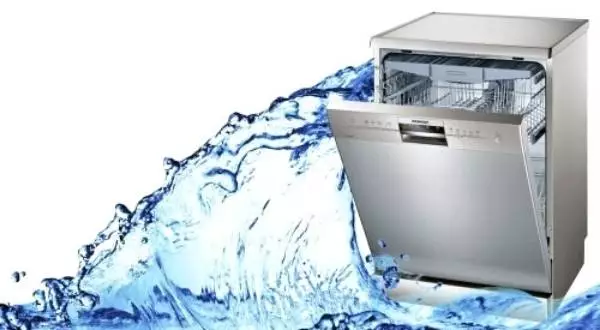
How Much Water Does A Dishwasher Use In Gallons?
In the USA the average dishwasher consumes about 4 gallons of water per cycle when doing a normal wash.
If you want to find out how much water a specific dishwasher uses, there are several ways to do so.
1. Check The Current Appliance’s Manual
The first step is to look at the current dishwasher’s manual and see how much water it uses.
Older units may use 8-12 gallons of water, while newer units average around 4.5-6 gallons per cycle.
2. Ask Your Manufacturer
Consider contacting the manufacturer of your current or prospective dishwasher.
And asking them to provide you with official figures regarding how much water their machine uses per cycle and annually.
This may be less helpful if you need to do a significant amount of research.
But it can be very helpful if your primary concern is simply saving money on your utility bills over time.
3. Check Local Appliance Store
You can check local appliance stores to see if they know how much water dishwashers use.
But keep in mind that it’s possible that different stores may give you different information.
4. Check The Energy Guide Label
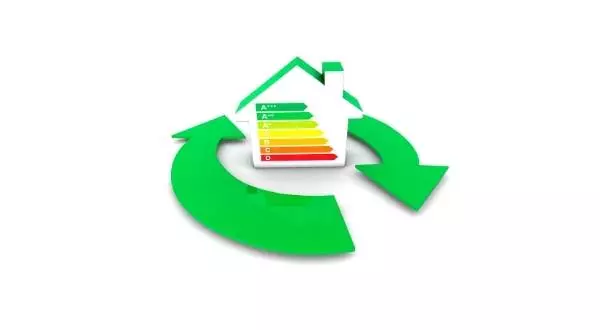
Under Energy Guide labels, there are usually two columns for water consumption per cycle and annual water consumption.
You can also see other data such as power usage to determine which appliances are more energy-efficient.
5. Look For An Annual Water Consumption Number
This number represents the amount of water used over a year (based on 365 cycles). And allows you to compare machines more easily.
You can then calculate how much it will cost in water bills if there are several different machines with different annual numbers of gallons per cycle.
By multiplying the number of gallons per year by your local price per gallon of drinking water.
6. Check Your Utility Bill
Another way to determine how much water a dishwasher uses is to take a look at your monthly utility bill.
Look for the amount used by the household during the past month(s) and divide that number by however many people live in your home.
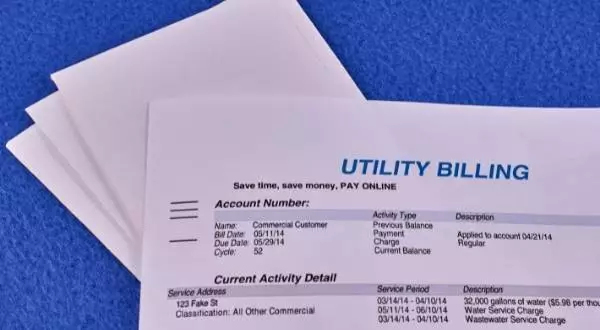
This should give you an average of how much water was used each day by every member of your family.
Including cooking and dishwashing activities or anything else that would require extra water usage (such as taking longer showers).
7. Check Online Consumer Reviews
Consider checking online consumer reviews for more information about how much water a dishwasher uses.
Although many manufacturers are secretive about their annual figures.
It’s possible that users have posted their findings publicly for all to see. This can be especially helpful if you look at older machines or lower-end models.
They may use more water than new high-efficiency units designed to save money and energy over time.
Unfortunately, even newer machines may still vary depending on the owner’s habits.
For example, some users might use more water than necessary. Because they don’t understand how to fully operate their dishwasher, while others may do everything right.
8. Learn About Energy Factor
Another way to determine how much water a dishwasher uses is to look at its Energy Factor (EF).
This number ranges from 1-100 and represents the amount of energy it takes to run one cycle compared with the electrical usage over the course of one year.
The higher the EF number, the more efficient and cost-effective an appliance will be in terms of your utility bills.
Since you’ll need less electricity for each load once you buy a machine with a higher EF.
9. Compare Graphs For Water Usage
Some websites, such as Energy Star, offer side-by-side comparisons of different dishwashers based on their EF and water consumption levels.
However, the exact gallons per cycle are not listed so you will have to do some math in order to get an accurate estimate.
Be aware that even machines with similar specifications may use slightly different amounts of water.
Also, consider any other factors mentioned above which can impact your dishwasher’s performance over time.
10. Look For Government Figures
Finally, there are several websites where you can find data about appliance usage in general.
Or information about certain popular models by looking up information from the Department of Energy or Energy Guide labels.
However, this will not help you determine how much water a dishwasher uses since it’s more of an estimate for an entire home’s daily usage rather than just the appliance in question.
How To Save Water When Using Your Dishwasher? 15 Easy Tips!

Did you know that using the dishwasher for half of your dishes can save up to 12 liters of water? This is because it has a higher efficiency than hand washing.
It uses less water and detergent, which means that this machine is environmentally friendly by itself, but if you want to do even more for our planet, just follow a few simple tips!
- Go for the full load
- Water-efficient loading
- Skip the pre-rinse
- Use the economic cycle
- Improve the final rinse
- Check your detergent dosage
- Make sure to clean your dishwasher
- Load dishes correctly – upper and lower racks
- Use a water softener (if you have hard water)
- Use the dishwasher water-saving device
- Use white vinegar for descaling
- Don’t use the drying cycle
- Use the right type of detergent
- Don’t run the dishwasher when it’s empty
- Don’t mix metals and plastics in the same load
And here are the details about each tip:
1. Go for the full load
This is the most important thing you should always do. Never wash only a few dishes in the dishwasher, no matter if you are using hand washing or a machine.

You can save energy by washing full loads of dishes because it uses less water and electricity.
2. Water-efficient loading
Start by prewashing glasses since they are usually left with little food scraps.
After eating which can mix with other dirtier items during the wash and diminish machine washing efficiency.
Meanwhile, avoid prewashing delicate and fine china that can become scratched. And may fall during the prewash or wash cycle.
Instead, load these items first to minimize damage and spotting caused by other items in the dishwasher.
3. Skip the pre-rinse
If you want to save water, then skip the usual pre-rinse of dishes. Even if there is a small amount of food left on the dish. It will be rinsed off during the wash cycle.
You can try to scrape off more leftovers before adding your dishes into the machine for saving even more water.
4. Use the economic cycle
In most modern dishwashers you can choose a cycle for a lighter load that will take a little bit longer but uses less water and energy. This means that you can save over 4 liters of water per load!
5. Improve the final rinse
After the wash cycle ends, it is recommended to open the machine as soon as possible to remove as much moisture as possible from dishes before they dry.
It is also advised by most manufacturers not to use heat-dry cycles at all.
Because the drying process uses additional energy. Which makes it hard to justify any potential water savings since you still have to air dry your dishes anyway.
Use this setting instead or just open your door after finished washing and let them air-dry naturally.
6. Check your detergent dosage
If you follow the previous tips, then you will minimize detergent leftovers on your dishes.
But if you still want to make sure that there is no leftover residue on your dishes, then you can choose a machine with an adjustable automatic dosage of detergents.
7. Make sure to clean your dishwasher
Every few months it’s advised to thoroughly clean your dishwasher. Because over time hard water may cause residue that diminishes cleaning effects and damages machine components.
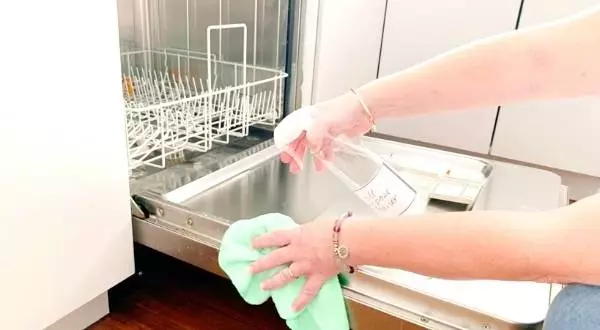
You can use white vinegar or special machine cleaners made for this purpose depending on the model of your dishwasher.
For optimal performance, run an empty cycle using these solutions after the cleaning cycle has finished.
This way you be sure that all parts are cleaned and the residue is removed.
8. Load dishes correctly – upper and lower racks
It may sound counter-intuitive, but loading dishes correctly actually saves water.
Items that are loaded closer to the center of the dishwasher or stacked on top of each other need less water and detergent to clean properly.
For best washing performance use racks for pots & pans instead of just leaving them inside a lower rack which will not be able to clean them properly.
9. Use a water softener (if you have hard water)
If your area has hard water with high mineral content, then using a dishwasher without any type of built-in or external water softening system is bad for the machine.
Because it will quickly cause corrosion inside its components and reduce their performance over time.
Thus, if you live in such an area and especially if you wash dishes by hand often, then get a dishwasher that either has an internal water softener or an integrated filter to prevent serious damage to the machine’s parts.
Check this list of Dishwashers with Water Softeners.
Make sure that the detergent dispensers are clean and free of debris build-up before starting any cycle.
If needed, remove the detergent dispensers and clean them with warm water and dish soap.
10. Use the dishwasher water-saving device
This is a little flow restrictor installed in the hose of your dishwasher that reduces the amount of water needed for each load. You can install it yourself or ask a professional to do this for you.
It is usually required by most local codes so don’t be afraid. It will not harm anything nor void any warranties!
11. Use white vinegar for descaling
If your dishwasher has a heating element or any other component that heats water during the wash cycle, then it can be damaged if the mineral content in the water is too high. This means that you would require an appliance repair service in order to fix it.
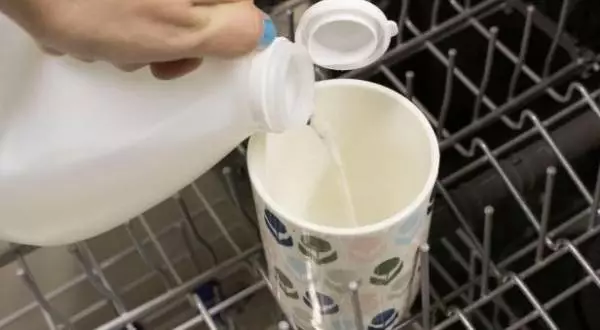
To prevent this from happening, use special descaling agents like vinegar when washing dishes by hand.
Or when running a fully loaded machine on the shortest eco cycle which uses a minimal amount of water (or even better – use economy/short-cycle on electronic machines).
Add 1 cup of vinegar to the rinse aid compartment and run the shortest possible cycle.
If you don’t have a rinse aid compartment, simply add vinegar to the main dispenser and run a short cycle.
12. Don’t use the drying cycle
If you don’t want your dishes to be wet after washing, then simply leave the door open after finishing dishwashing and let them air-dry naturally.
This has several benefits. It’s energy-efficient compared to using drying cycles, there is no need to scrape water off dishes before unloading, and even better.
You don’t have to re-wash them again when they are still wet after unloading.
This saves water and thus is recommended when using ecological dishwashing detergents.
Or if you simply prefer environmentally friendly dishwashers over super-efficient ones.
13. Use the right type of detergent
Using dishwasher detergents is important to get the best results from this appliance.
Firstly, make sure that you don’t add too much. Because it can leave a film on your dishes and affect how well they are being cleaned.
Secondly, use only regular dishwashers or ecological products for hand-washing. Dishwasher detergents have a special formula.
Which is designed to work with high temperature and pressure within the machine resulting in superior cleaning power.
There are even some specially formulated products to prevent hard water buildups inside the unit.
14. Don’t run the dishwasher when it’s empty
It may seem cool just to start a new cycle after finishing one. Especially if you hate waiting until all items are washed before unloading.
But this is bad for the machine because it may cause malfunction of its components.
As a rule of thumb, never leave an empty dishwasher running. If you are not at home or asleep when it finishes the cycle, then unload the machine immediately.
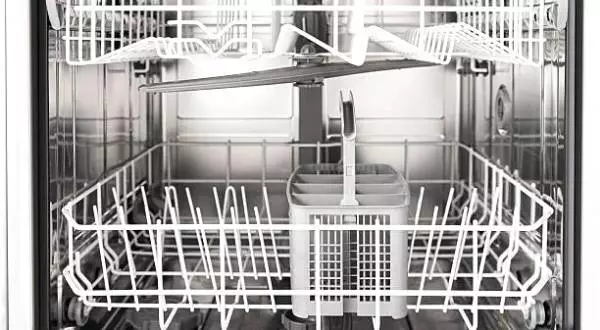
After finishing, especially if it’s an electronic one with the display in front which can also show error messages on it.
This way you will be able to prevent any damage that can result in expensive repairs.
15. Don’t mix metals and plastics in the same load
It is better to separate items made of different materials before starting a new cycle by hand or using the dishwasher.
Because they simply don’t go well together during the washing process.
Metals rust very quickly even when exposed for short periods of time only.
So if you put them in contact with other stuff made of different materials, then metal chips or flakes will detach from the surface during the washing process and contaminate everything else.
Plastics melt at high temperatures so they should also be separated from metals which can get very hot inside the dishwasher.
how much water does a dishwasher save?
You should understand that a dishwasher uses far less water than if you were to hand wash the exact same dishes.
Depending upon how full your machine is and which of the available settings you use.
It could end up using as little as 1 gallon per load. This adds up over time, so while the amount may seem small compared to having a clean kitchen sink full of water, it is still worth considering.
FAQs about How Much Water Does A Dishwasher Use
how much water does a dishwasher use per cycle?
It’s hard to tell how much water a dishwasher uses per cycle as it varies from model to model and depends on the size of the load.
how many gallons of water does a dishwasher use?
A full-size Energy Star models use as little as 3.5 gallons per cycle while heavy-duty ones can use up to 8 gallons or more.
how much water does a dishwasher use to clean dishes?
It takes about 3 gallons of water on average to thoroughly wash plates, pots and pans placed in the upper rack of most modern dishwashers. So it takes a little over a gallon to clean each dish.
how much water does a new dishwasher use?
A new dishwasher can use up to 2 gallons of water per cycle.
Final Words
This blog post has been helpful in finding an answer to the question of how much water does a dishwasher use. We hope that you found this information useful and informative.
But if not, please leave us your feedback so we can continue to improve our posts for future readers!

